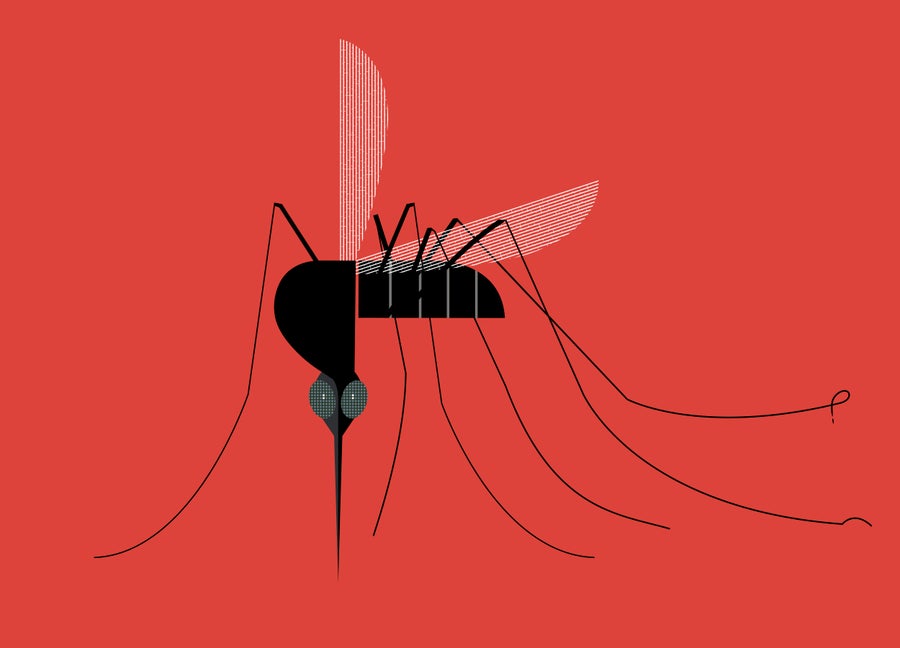Understanding Gene Drives And Their Implications For African Populations, Ecosystems
...‘No Country In Africa Should Be ‘Launch Pad’ For Gene Drives,’ Ntambirweki Insists

Edu Abade
As gene drives are being vigorously promoted in some African countries, experts have cautioned policy makers in the public and private sectors, as well leaders and governments of the continent to tread carefully on the subject matter of gene drives to avoid dire consequences on their populations and entire ecosystems.
Discrepancies and suspicions over the relatively new scientific buzzword is not lost on environmental watchdogs and activists, which is why the Renevlyn Development Initiative (RDI), in collaboration with media experts, researchers and ecological farmers from the ETC Group, Save Our Seeds and organized a virtual training for journalists to deepen their knowledge of Reporting Gene Drives in Lagos on Friday, March 22, 2024.
Gene drives has been defined as a new and controversial Genetic Modification (GM) technology, with first proof-of-principle synthetic gene drive demonstrated in 2015 on yeast and flies. Since it was developed in mosquitoes and mice with partial efficacy, it is believed to allow for a permanent alteration of wild populations and ecosystems.
In his welcome address, Executive Director of RDI, Philip Jakpor, said: “We are not averse to technology or innovation as long as they are rooted in facts, the promotion of our culture, are indigenous and protect our people from manipulation in all forms. But we are aware of a new form of colonialism that targets altering our food, our food systems and nature as a whole.
“Gene drives are already being experimented in Uganda, Ghana and in Burkina Faso where sterilized mosquitoes were released in 2019. Nigeria, with its huge population of more than 230 million people is a potential testing ground for gene drives. What are the risks? What are the ethical considerations? What are the discussions that should be going on?
“It is for these reasons that we engaged with experts in the gene drives discourse, campaigners, researchers and organizations that understand what is unfolding behind the scenes to make us understand what gene drives are and the issues we should be conscious of as African journalists when writing on the subject matter.”
Publisher of EnviroNews, Michael Simire, who spoke on Communicating the Jargons of Science, said: “Despite the numerous challenges, the science journalist should strive to overcome these challenges by ensuring that he or she personally develops himself or herself to be grounded in scientific terminologies and be in a better position to effectively communicate of simplify the jargons.
In his presentation titled: Gene Drives: What It Is All About, an ecological Farmer, Diego Bárcena Menéndez, explained that for gene drive inheritance, altered genes are almost always inherited, adding the rules for Mendelian inheritance is that organisms inherit 50 percent of their Genome from each parent, while mutations occur but are very rarely fixed in a population.
“There is however, an exception for strong selection pressure, especially in Sickle Cell Anemia.”
On application of gene drives for Malaria, he said for killer GDs, a Gene Drive that slowly makes mosquitoes infertile are inserted into sterile males and females as fitness cost genes.
Citing Carballar-Lejarazú, R. et al, 2023 and Hernandes, N et al, 2024, he said for functional GDs, genes that attack P. Falciparium are inserted to make mosquitoes susceptible to insecticides.
In her presentation on Gene Drive Developments in Africa, Barbara Ntambirweki of AfriTAP/ETC Group, Civil Society Digital Practitioner, Stanford University, explained that globally there were 249 million estimated malaria cases, almost half of which were accounted for by Nigeria (26.8 percent), Congo (12.3 percent), Uganda (5.1 percent and Mozambique (4.2 percent)
“Between 2019 and 2022 there were substantial increases in estimated case numbers Nigeria 5.3million, Ethiopia 2.4million, Uganda 1.3million, Tanzania 1.1million and Mali 1.1million. Cape Verde reported zero deaths since 2018, while Botswana, Eritrea and Eswatini reported fewer than 10 deaths,” she said..
“Although regulations are yet to be put in place globally, the most advanced projects are aimed at malaria interventions, with some African countries – Ghana, Burkina Faso, Tanzania and Uganda. Uganda has one of the highest global burdens of malaria cases, with over 90 percent of the population at risk, malaria remains Uganda’s leading cause of death, especially in children,” she stated.
She further explained that the Target Malaria Research consortium intends to undertake open releases of gene drive mosquitoes that will, apparently, reduce the population of the female anopheles mosquito and the mosquito population and reduce malaria transmission and disease.
“In Africa there is little or no capacity for proper functioning of biosafety systems even for first generation technologies that have been around for 20 years. Gene drives pose grave risks for the entire continent.
“We should advocate that no country in Africa should be a ‘launch pad’ for any release of gene drives. There are too many scientific uncertainties and scientific knowledge still lacking. We need to protect our biodiversity and support domestic strategies to combat malaria that are focused on boosting healthcare systems and infrastructure,” she concluded.
Also in her presentation, Barbara Filz of Stop Gene Drives Campaign, who focused on Behind the Scenes of Gene Drives: Political Structures, Power Dynamics and Role of the Media, revealed that the idea of gene drives was being discussed at the United Nations (UN) Convention on Biodiversity (CBD), the International Union for Conservation of Nature (IUCN) and some national governments worldwide, adding that some countries have already signed into the convention and it has now become legally binding on the parties.
She stressed that it was important for journalists to follow the issues even in political spaces that are difficult to access and public information is not sufficient to provide an accurate picture.
“The media should, therefore, amplify the voices of civil society and affected communities, disseminate appropriate information (to balance the spread of pure technology marketing) and expose what is behind the limited narrative of a ‘techno-fix as it relates to gene drives,” she said.










